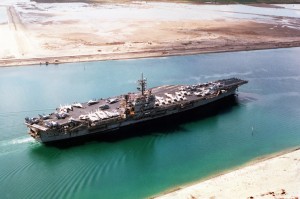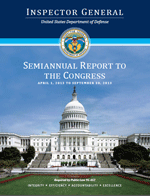That WW II message was sent by Admiral Nimitz to Admiral Halsey in support of Admiral Thomas C. Kinkaid, Commander of landing forces seizing the island of Leyte in the Pacific. Admiral Halsey had fallen for the Japanesse ruse, diverting most of his carriers and battleships  supporting the invasion to chase the Japanese decoy Northern Force, leaving Admiral Kincaid’s forces in the lurch. Famously, however, when the message was delivered to Halsey, the phrase “the world wonders” was added by mistake. Halsey took it to be an insult, creating bad blood between the two. There are some pretty funny accounts about “Bull” Halsey blowing his top when he read the message. Here is the actual message:
supporting the invasion to chase the Japanese decoy Northern Force, leaving Admiral Kincaid’s forces in the lurch. Famously, however, when the message was delivered to Halsey, the phrase “the world wonders” was added by mistake. Halsey took it to be an insult, creating bad blood between the two. There are some pretty funny accounts about “Bull” Halsey blowing his top when he read the message. Here is the actual message:
I just returned from the annual American Society of Military Comptrollers (ASMC) Professional Development Institute (PDI) in New Orleans. It was an outstanding opportunity to learn about the state of the art in the DoD budget and accounting. Well done to Executive Director Al Runnels and his staff!!! This year I reckon there was north of 2000 folks from throughout the DoD Financial Management profession….Army, Air Force, Office of the Secretary of Defense, Defense Agencies and even the US Coast Guard. Leadership and rank-and-file throughout DoD, from the Honorable Mike McCord, the Undersecretary of Defense (Comptroller) on down, gathered to consult, confer and otherwise hobnob with their fellow budget wizards. In fact, I dare say that most of the senior Financial Management leadership from the services and defense agencies was there. There was only one thing missing: the Navy.
Yep, that’s right. The Navy chose not to participate. Given that every other service, defense agency, and the OSD staff decided it was important to send their people, I can only assume that either the Navy thought that its people (personnel in DoD speak) didn’t need the training offered at the PDI or that despite the need for training, barring their attendance was the safer or smarter move. So the Navy and USMC financial managers sat on the sidelines while the remainder of their counterparts in DoD heard for Mr. McCord; the Honorable Jamie Morin, Director of CAPE; Mark Reger, the Deputy Comptroller of the United States and numerous other senior officials. They attended required FM certification training, attended workshops, participated in a whole day of service-specific training and conducted community service projects. In the interest of accuracy, there were a handful of Navy folks there, but only if they were actually presenting a workshop or receiving a national-level award.
Why did the Navy choose not to participate? Well, it is true that in recent years “conventions” and other large-scale events have come under scrutiny because of some very bad decisions made by some not-so-good leaders. But checks and balances were put into place to ensure legitimacy and need before approving such meetings. All organizations in DoD went through the same process of evaluation. The PDI was not given “blanket approval” by DoD and thus the leadership in each organization had to make the call on whether or not to send its people to this valuable training. Obviously, Navy leadership uniquely decided this PDI was not in accordance with applicable rules and regulations and thus elected not to send its people. Now those of you who are not familiar with the world of financial management might wonder why a PDI is needed. Here’s the scoop:
Most DoD financial managers are required to receive about 40 hours of continuing professional education annually. Those who have achieved the coveted Certified Defense Financial Manager (your humble author among them) are required to take 40 hours annually to retain their certification. In addition, the DoD recently introduced a financial certification program aimed at increasing the professionalism of the FM workforce. It’s a tiered program with each level requiring specific courses delivered by qualified personnel. Once a certain level of qualification is reached, there is a continuing education requirement similar to those above. The highly specialized training required for the various certification levels is offered at the PDI, along with a variety of accredited courses that count toward annual training requirement. I’m not quite sure how many hours it would be possible to knock out at the PDI, but it’s somewhere in the neighborhood of 20. That’s half the annual requirement!
To make sure people actually attend the training, they are individually scanned in and out of training sessions and only given credit if they attend the entire session. Each day begins at 07:00AM with breakfast and training sessions go on throughout the day until 4:40 PM. Believe me, that’s a long day and I have yet to figure out a way to “beat the system” so I have to sit through the classes all day to get credit. It’s not exactly a cake walk. You can be sure people are actually getting the training.
Enough of that. And now for the gorilla in the room: Yes, it’s in New Orleans, but there’s no escaping the fact that PDI attendees are sequestered (I just had to use that word) for a good nine hours a day….No zooming up and down Bourbon Street, no clowns wandering around, no $26 cupcakes…it’s all business during extended working hours. (This shouldn’t be surprising since it’s basically run by accountants, for accountants). By the way, what’s the difference between an introverted accountant and an extroverted accountant? The extroverted accountant looks at your shoes when he talks to you….Badda-Booom!
So I mentioned earlier that maybe the reason the Navy leaders chose not to send Navy and Marine Corps people to this training is that they don’t need it. Well, you would be wrong if you made that assumption. I attended a session where the current numbers of people certified by service was presented and the Navy was just a sliver in the pie chart while all other services were big, fat pie slices just like your grandmother would serve. So the Navy needs the training above all and they are obviously not getting it elsewhere. In fact, given the workload of Financial Managers these days, it is really hard to find the time to take on-line courses. Oh sure, there are on-line courses….and they are good for filling some portion of the requirement, but no matter what you say, nothing beats real-time, classroom training to allow for substantial interchange between students and instructors. Would you rather have your dentist fulfill his annual professional training staring at the PC at home while drinking a martini or attending a gathering of dental professionals with an opportunity to talk to pioneers of the latest in the dental art and exchange views and techniques with his/her peers? When he/she says “Good thing I saw how to put in this implant on You Tube”, how would you feel?? or how about this: “Oh yeah…..since you have to put in a 10 hour day at the office, just do that training in your spare time”……Right! Here’s an idea: Why not do your training the next time we furlough you? What’s the big deal? We have posted classroom material in all the heads…..do some training while you do your business!!! It’s all about being efficient!” Seriously folks, I do remember aircraft checklists being posted above the urinals and on the backs of the stall doors in the squadron head in order to make use of “spare time”!!!

I know I don’t have the right to criticize and I apparently don’t have all the facts, so I recommend the reader of this tome (It’s longer than I wanted) consider these thoughts to be from an unqualified, uninformed source. And if you were the decision maker, please don’t get all spun up. The decision was yours to make and I respect your decision. I just hope your staff did you the courtesy of making sure you had all the facts before you decided. (You only know what they want you to know.) I am confident that the Navy leadership can give you a much better reason for why they stayed away. That not withstanding, I hope the Navy decides to participate next year so they can be a part of the team. I know I was embarrassed that so few from my beloved Navy were there. And just because the rest of the Services, OSD, Coast Guard, and Defense Agencies took just a little risk and sent their people to PDI, doesn’t mean the Navy had to send its people to PDI(sigh, I can see my Mother saying that right now). Maybe they didn’t have the money to send their people (even though everyone else did). Maybe it wasn’t that important. Maybe there was another budget drill going on. Maybe they elected to spend the money on local training for the hundreds (if not thousands) of Navy FMers around the world. I just don’t know. But this I do know: when next year’s PDI rolls around I sure hope we don’t have to again ask, “Where is TASK FORCE THIRTY FOUR the FM world wonders?”




 In just a few days, all the big accounting firms that do business with DoD will be submitting proposals to conduct audits of the the Army, Navy and Air Force Statements of Budgetary Activity (SBA)……that’s a high level balance sheet that has little applicability to the actual management of anything. Experience in auditing the Marine Corps proved that trying to do anything else was futile. One just has to read the Reuters article on “Plugs” to see just how daunting a task auditing any of the services really is. Inventing phantom ledger entries or “plugs” to explain away imbalances in the “goes-intas” and the “goes-outtas” is apparently the norm at the Defense Finance and Accounting Service. What’s a little disturbing about this whole audit thing, is that many of these sins will go unexamined because they do not necessarily impact the SBA. See my article “
In just a few days, all the big accounting firms that do business with DoD will be submitting proposals to conduct audits of the the Army, Navy and Air Force Statements of Budgetary Activity (SBA)……that’s a high level balance sheet that has little applicability to the actual management of anything. Experience in auditing the Marine Corps proved that trying to do anything else was futile. One just has to read the Reuters article on “Plugs” to see just how daunting a task auditing any of the services really is. Inventing phantom ledger entries or “plugs” to explain away imbalances in the “goes-intas” and the “goes-outtas” is apparently the norm at the Defense Finance and Accounting Service. What’s a little disturbing about this whole audit thing, is that many of these sins will go unexamined because they do not necessarily impact the SBA. See my article “ Stay tuned, but I think with sequestration about to raise its head once again, the President under pressure to mount military responses to multiple spots around the globe, and political stalemate in the Congress, betting on continued funding for DoD audits is at best like wagering on red or black at the roulette wheel at Trump Towers in Atlantic City (ooppppsss, it’s out of business, so how about The Nugget in Las Vegas?).
Stay tuned, but I think with sequestration about to raise its head once again, the President under pressure to mount military responses to multiple spots around the globe, and political stalemate in the Congress, betting on continued funding for DoD audits is at best like wagering on red or black at the roulette wheel at Trump Towers in Atlantic City (ooppppsss, it’s out of business, so how about The Nugget in Las Vegas?).

